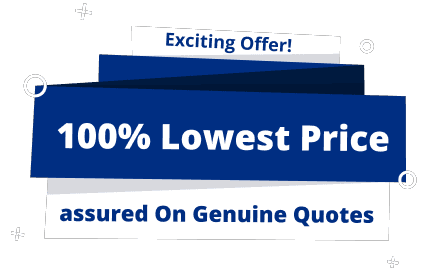Recent Posts
- Which Kind Of Company Will Be Good..
- Which Kind Of Company Will Be Good..
- Which Kind of Company Will be Good..
- Why India is Ideal for Digital Mar..
- 10 Best Countries to Work For Digi..
- Which Kind Of Company Will Be Good..
- 11 Best Countries To Work For Java..
- The Demand For Java Developers In ..
- Best Countries To Work For Web Des..
- Best Countries To Work For SEO Pro..
You have decided to develop a new software product. Before you engage in software development, you know you validate the problem your software will solve. Also, you should test the solution MVP Development gets to your rescue.
According to the Lean Startup Methodology, the MVP is highly crucial. It will let you validate the assumptions as affordably and as quickly as possible. As a business owner, you know the value of every dollar. Here, MVP can function as a safety locker for your business. Yes, it will help if you fear your idea fails or the product fails to reach the intended audience.
The Purpose of MVP:
You know that building a house without foundation is impossible. In the same way, you cannot create a successful product without an MVP. The purpose of MVP or Minimum Viable Product is, to begin with, a small use case. You can test it, then decide whether you should pivot and move in a different path or work on the same idea into a product solution. You should develop an MVP to
- Get attention from investors
- Build a product that people will use
- Gain a better understanding of the domain
- Validate ideas quickly and affordably
- Have a place for low-risk experiments
Now, you know that MVP is necessary and beneficial in many ways. So, your question will be how to build a minimum viable product. Let us get into the steps to build a minimum viable product here:
Steps to Build a Minimum Viable Product:
1. Identifying and Understanding Your Business and Market Needs:
The first thing in the minimum viable product checklist is spotting and understanding your business. Also, you should understand the market requirements. It is also crucial to evaluate what your competitors do. You should decide what you will include to make your product or solution stand out from your competitor’s products. Evaluating these things will help you decide on the kind of product to produce to be successful.
Long-Term Goals:
Once you have spotted a requirement for your product, you should set a long-term goal. You should decide what you plan to achieve. For instance, if you are a coffee shop chain, you might have the long-term goal of reducing checkout time by 30 percent.
Success Criteria:
The next thing you will have to do is to spot what will define your product success. For instance, in the example of the coffee chain above, apart from reaching a 30 percent time-to-checkout reduction, you can keep reaching a larger audience group as the success point. Also, you can fix the number of monthly sales to be achieved as the success criteria.
2. Defining the Problem Statement
Apart from understanding the market and business needs, you will have to define the problem to be addressed next. You can write it down with the MVP to check whether it is possible to address the issue. You will have to validate the idea without actually developing the solution. Only then you can save resources. Before finding a solution, you will first have to know whether the problem exists.
3. Find the Opportunities:
In the initial two stages, you might have already spotted the market gaps and the issue to address. In this step, you will have to find opportunities to solve these issues and add value through your product or app. In this step, you will have to do the things listed below:
Map Out the User Journeys:
Here, users’ journeys can be divided easily into three parts. They are the user, the actions of users, and story endings.
Spotting the Users:
Yes, you are right. This step involves identifying the people who will be using your product. There are chances that you might come across different categories of users. For instance, let us consider that your business has a service appointment booking app. In this case, you will have both the appointment scheduler and service technician as users.
Spotting the Story Endings:
Every user, will have a story ending. This story will be the concluding goal of the user.
Spotting Jobs:
The jobs are the actions the users or users should take to achieve the goal or reach the story ending.
Here, creating a chart to spot users’ journey would be good. In the example of a pet adoption agency App, the chart will look like as below:
| USER (ACTOR) | ACTIONS (JOBS) | STORY ENDING |
|---|---|---|
| Pet Adopter | Build Profit Find a Pet Book Appointment Apply | Take a pet home |
When you plan for your MVP, you will probably be interested in looking at the user having the most jobs and focusing on that user. This move is something that makes sense. Nevertheless, some higher priorities are to be addressed. So, it would be better to pay attention to a different user.
For Each Action Create A Gain and Pain Map:
The gain and pain map will permit you to spot all the pain points of users and the gains they get when addressing each one of them. This move will let you spot, where you have the greatest potential to add value. After this, you can pay attention to MVP in these areas when adding items with less impact on the product roadmap for releases in the future. In this process, you will have to do the following:
Write down the Actions to be Done by the User:
In this step, you will have to list the actions you spotted when mapping out the user’s journey.
Write down the Pain Points for Each Action:
Pain points are nothing but a summary of users’ inconveniences or issues when completing the actions.
Write down the Gains for Each Action:
The gain is what value is achieved when addressing the pain.
Now, you will have to count the number of gains and pains for every action for every user. Ideally, when you feel it to be correct, you should assign a value with the help of a point system to aid in quantifying the impact or importance of the gain. Here, it would be good to organize the gain and pain map into a chart would be good. For the pet adoption app example above, the pain and gain points will look like below:
| PAINS | ACTION | GAIN |
|---|---|---|
| Trouble Viewing appointment availability | Book Appointment | View available appointments and book immediately |
Encapsulate the Gains and Pains into Opportunity Statements:
You can summarize the gains and pains in many ways. One way is to use the opportunity statements that might be prepared in the “How might we” format. For instance, “how might we make it simple for users to book appointments? This will help you convert the gains and pains that you have spotted in the previous step into feature sentences.
4. Decide on the Core Features of MVP:
When you find the answer to the question of how to build a minimum viable product, you should remember that less is more. A narrow focus is a winning strategy. In other words, having a small group of target users will be good as compared to attracting a lot of people. A sole wisely selected feature is better as compared to a not-so-friendly combination of features.
Let us consider that you plan to build a car. You do this with the idea that potential customers will show interest to get to places quicker. Here, building a car needs a lot of time and money. Before you spend money and time on any idea, it is better to test your assumptions by developing a minimum-viable product.
During the MVP, you are implementing your idea of helping people get places quicker by producing a skateboard. This primitive device can help people move quicker. If your target market shows interest in skateboarding. Before you build a car, you can make a skateboard and continue adding features until you are prepared to build a car.
The idea here is to solve issues and not implement features. Indeed, offering tires will not solve the initial issue. But a skateboard will. The product you release initially might be ancient. Nevertheless, if your idea offers an effective solution to an existing issue without rejecting user experience, it will bring in more users. The MVP will meet its objectives and prove the assumptions in this case.
The idea here is to start with the least core features. Particularly, the features should add value to your customers.
5. Develop and Test the MVP:
This is the final step, and you are almost there in this step. You have a great idea, you have defined tasks, objectives, and scope. Now, it is time to develop the MVP and test it.
Conclusion:
You can test your Minimum Viable Product in a couple of steps. First is when the MVP is prepared, allow your team to use the product for different days. If all are fine, you can provide access to the product to the first users. Let them test it for around a week or two.
Then, you will have to gather behavior analytics, statistics, and feedback and can analyze the entire data set. You will see the features to improve and functionalities to add and remove. Testing the product will help you develop an effective first version that you can bring to the market and ensure ongoing improvement.
Want to Level Up Your Skills?
LearnNThrive is a global training and placement provider helping the graduates to pick the best technology trainings and certification programs.
Have queries? Get In touch!

